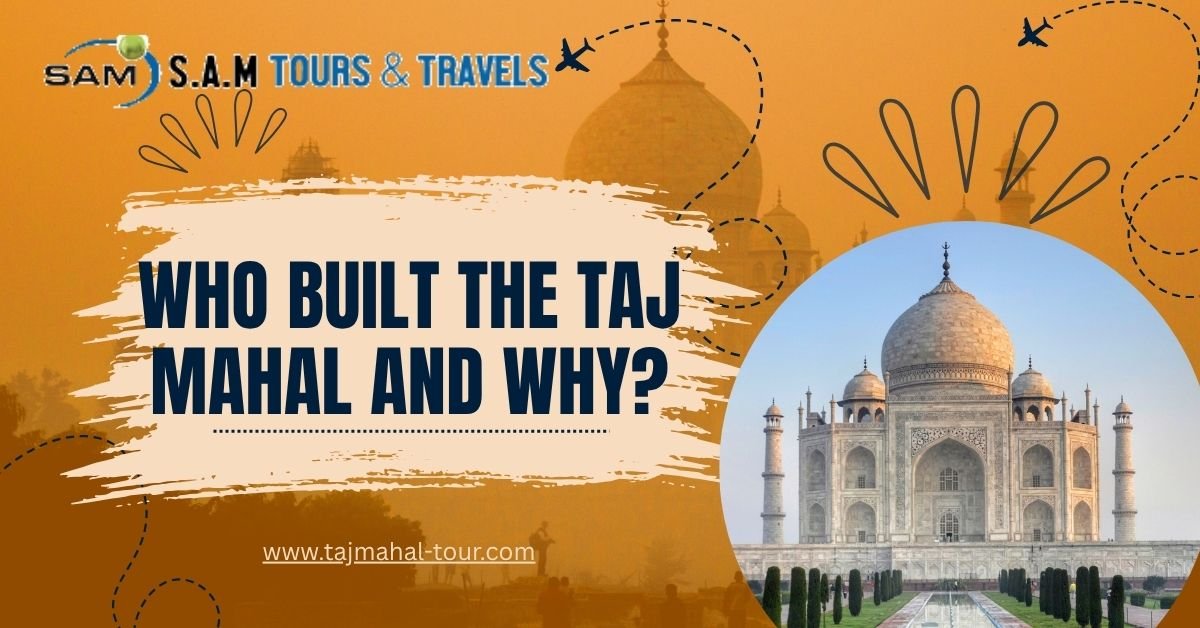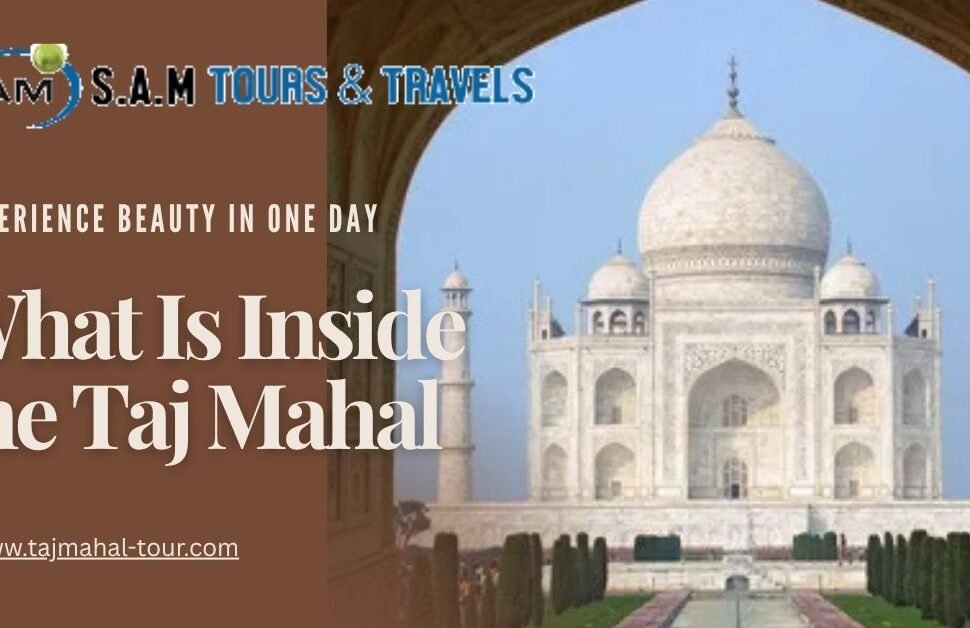When we talk about the greatest symbols of eternal love, the Taj Mahal stands at the top. Located in Agra, India, this white marble masterpiece is one of the Seven Wonders of the World. But many still wonder, who built the Taj Mahal and why? The answer to this question takes us back to the era of the Mughal Empire—a story of deep love, loss, and architectural brilliance.
In this blog by TajMahal-Tour, we will explore the true story behind the Taj Mahal, its creator, and the powerful reason it came into existence.
Who Built the Taj Mahal and Why?
The question of who built the Taj Mahal and why leads us straight to Mughal Emperor Shah Jahan. He was the fifth ruler of the Mughal dynasty and a patron of fine arts and architecture. Shah Jahan commissioned the Taj Mahal in 1632 in memory of his beloved wife Mumtaz Mahal, who died during childbirth. Their love story is one of the most cherished tales in Indian history and the very reason behind the creation of this majestic structure.
Why Was the Taj Mahal Built?
The Taj Mahal was not just built as a tomb—it was built as a monument of love. Shah Jahan’s heart broke when Mumtaz Mahal passed away. To honor her memory and show the world the depth of his love, he decided to build a structure that would immortalize her name forever.
It took over 22 years and more than 20,000 artisans to complete this incredible work of art. The architecture combines Persian, Islamic, and Indian elements, creating a truly unique and unforgettable design.
The Love Story of Shah Jahan and Mumtaz Mahal
Mumtaz Mahal was not just any queen—she was Shah Jahan’s confidante and the love of his life. She accompanied him even on military campaigns. When she died in 1631, giving birth to their 14th child, Shah Jahan was devastated.
According to legends, he went into deep mourning, isolating himself from the world for months. The Taj Mahal was his way of expressing the deep grief and undying love he felt for her.
Her last wish was that he should never remarry and take care of their children, which he honored. His decision to build a timeless structure for her remains one of the most emotional architectural gestures in history.
Taj Mahal: More Than Just a Mausoleum
While many know it as a tomb, the Taj Mahal is a symbol of timeless beauty. The entire complex includes a mosque, guest house, and a massive garden aligned symmetrically. It represents the perfect blend of Mughal architecture, with its grand domes, calligraphy, inlay work, and marble lattice screens.
To learn more about Taj Mahal tours and its historical wonders, you can explore our detailed travel plans on TajMahal-Tour.
The layout of the Taj Mahal complex follows the Mughal practice of Charbagh or “four gardens,” symbolizing paradise as described in the Quran. The reflection pool at the center creates a mirror image of the main mausoleum, enhancing its surreal beauty.
Interesting Facts About the Taj Mahal’s Construction
- White Marble from Makrana, Rajasthan: The dazzling white marble used in the Taj Mahal was brought from hundreds of kilometers away.
- Precious Gemstones: The structure is decorated with semi-precious stones like jade, crystal, turquoise, and lapis lazuli.
- Optical Illusion: The minarets around the main dome are slightly tilted outward to protect the tomb from collapsing during an earthquake.
- Color-Changing Effect: The Taj Mahal appears to change color depending on the time of the day—pinkish in the morning, white in the afternoon, and golden at night.
- Calligraphy: Verses from the Quran are beautifully inscribed throughout the complex in intricate calligraphy.
Internal Links (as requested)
- Want to know more about Taj Mahal history? Dive into the royal past now.
- Looking for the perfect plan to explore this beauty? Check out our Taj Mahal tour packages today!
- Discover all that Agra offers with our exclusive same day tours from Delhi.
The Architecture of Love
The design of the Taj Mahal is often seen as a physical representation of love and harmony. The symmetry, the intricacy of the floral carvings, the grandeur of the main dome, and the peaceful flow of the Yamuna River nearby create an atmosphere of peace and reflection.
Each minaret was strategically placed not just for aesthetics but also to offer architectural balance. Even the grave chamber of Mumtaz Mahal is placed precisely at the center to reflect her significance.
The Taj Mahal represents more than just love; it signifies eternal commitment, sorrow, and divine inspiration.
The Impact of the Taj Mahal on Indian Culture
The Taj Mahal has influenced Indian art, poetry, and culture in profound ways. It is a part of school books, songs, Bollywood movies, and love stories. Artists across centuries have tried to replicate or portray its beauty through paintings and photographs.
It is not only a symbol of Mughal excellence but also of India’s cultural richness. Tourists from all over the world flock here to witness its splendor.
Legacy of the Taj Mahal Today
Today, the Taj Mahal is not just a UNESCO World Heritage Site but also a globally recognized monument attracting millions of tourists every year. It continues to represent love, loss, and the power of human emotions expressed through art.
When you visit the monument with our specially designed Taj Mahal day tours, you don’t just see a building—you feel a story that has lived on for centuries.
The Taj Mahal also plays a major role in India’s tourism economy, helping thousands of local artisans, guides, and hospitality workers make a livelihood.
Final Thoughts
So, who built the Taj Mahal and why? It was Shah Jahan, a grieving emperor, who turned his heartbreak into the most iconic symbol of love the world has ever seen. The Taj Mahal is more than just a building; it’s an emotional masterpiece made of marble, stories, and memories.
If you’ve ever dreamed of standing before this majestic monument and feeling its aura, TajMahal-Tour is here to make that dream come true.
Plan your visit today and step into a story that continues to touch hearts across generations.



